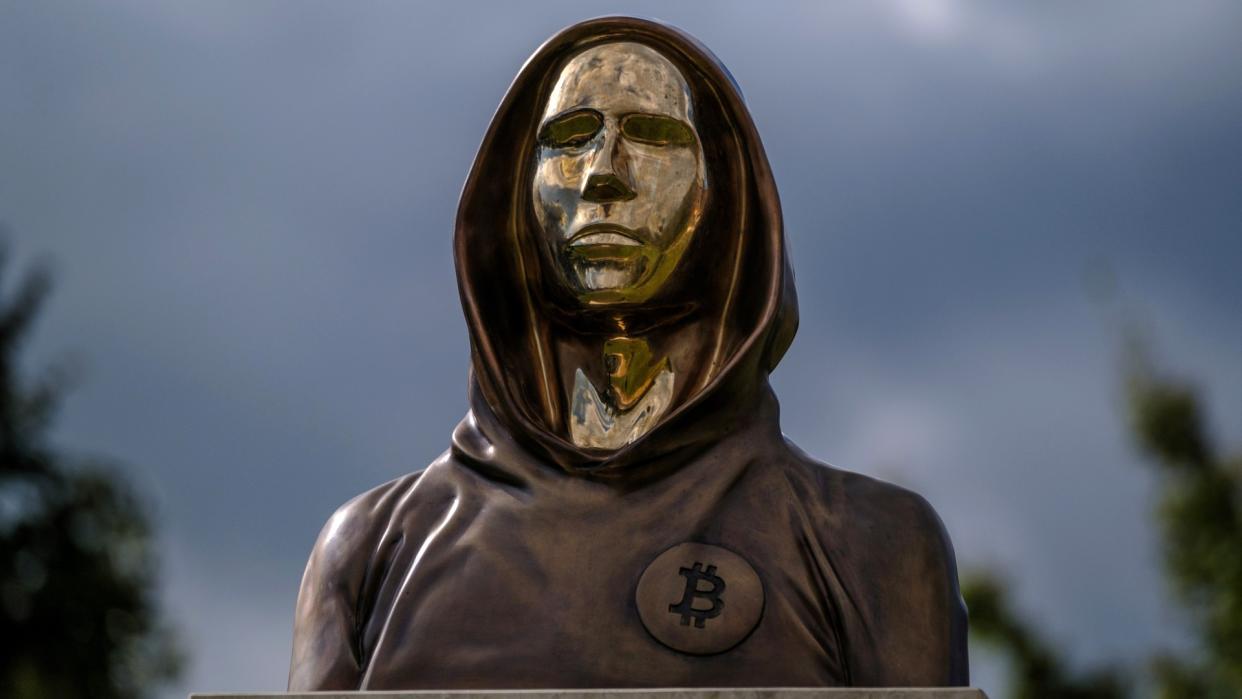The truth about who founded bitcoin

- Oops!Something went wrong.Please try again later.
The legend of Satoshi Nakamoto, the anonymous bitcoin founder, is a mystery built for the digital age. His true identity has become mythologized, and while no one knows who he is, he's become a symbol of a new era of freedom in finance and technology. The heat is now on an Australian scientist, who has claimed for years to be the enigmatic founder.
The hunt for Satoshi Nakamoto and the Craig Wright problem
The murky history of bitcoin began in 2008, in the "shadow of a global financial meltdown," when someone under the name Satoshi Nakamoto released a white paper outlining the vision for "a new electronic money and peer-to-peer payment system that would obviate the need for troublesome intermediaries like banks," Wired said. The enigmatic creator sent the first bitcoin transaction in 2009, and little more than two years later, they disappeared from the internet. "The hunt for Nakamoto began," said Wired.
The absence of a leader has helped bitcoin flourish since Nakamoto disappeared, making it "robust" by forcing it to evolve unfettered in an anarchistic system, software developer and early bitcoin adopter Jameson Lopp said to Wired. "Free from the overbearing influence of a founder, anyone that volunteered their time to work on bitcoin could have a say in its direction," Wired said. But one man's claims threaten to complicate that ecosystem.
Nakamoto's name has been linked to many people, including Australian computer scientist Craig Wright, who orchestrated an "elaborate but unconvincing demonstration" that he was the mysterious creator in 2016, Billy Bambrough said at Forbes. Since then, Wright has spent years "dragging naysayers through the courts in a largely unsuccessful attempt to legally be recognized as bitcoin's creator." With the help of former gambling billionaire Calvin Ayre, Wright has sued bitcoin developers, social media users, podcasters, and anyone else who doubted the credibility of his claims. However, last year, a leaked email hinted that Ayre's faith in Wright was waning.
The high-stakes lawsuit that could finally solve the mystery
Three years ago, a nonprofit coalition of crypto and tech companies called the Crypto Open Patent Alliance brought a lawsuit against Wright, asking the court to officially declare that he is not Nakamoto. Wright has leveraged his "substantial financial backing" against crypto developers based on a lie, "many of whom cannot even afford to present the most basic defense," Coinbase Chief Legal Officer Paul Grewal said on behalf of COPA. "This is the exact opposite of the vision that animated Satoshi's white paper in 2008," he said. "It's a drain on the talent and spirit of the crypto economy as a whole, and it needs to stop — now." The case finally went to trial in the U.K. on Feb. 5.
Unlike other recent crypto-related lawsuits, like Sam Bankman-Fried's fraud trial, "the COPA v. Wright case has attracted little attention," Joel Khalili said in Wired. The case has drawn a small crowd of photographers, journalists, and crypto enthusiasts. "But the case has the potential to be highly consequential."
A week into the case, the ongoing courtroom tension has "left onlookers astonished," Forbes' Susie Violet Ward said. "Each revelation seems to cast ripples of uncertainty and produce more questions than answers, further muddying the waters." So far, the trial has been a "showcase of detailed technical evidence," Ward said, "punctuated by moments of drama." At one point, Wright exclaimed, "But I AM Satoshi!" The declaration happened when he was cross-examined by Jonathan Hough, who represented COPA.
In a surprise twist, Wright admitted to the court that some of the documents he presented to prove he was Nakamoto were indeed forgeries, "a revelation that once again sent a wave of disbelief through the courtroom," Ward said. The admission came after COPA's "meticulous" presentation of evidence highlighting "time discrepancies in the documents, such as fonts that were not available when the documents were supposedly created."
The trial is expected to last about six weeks.

